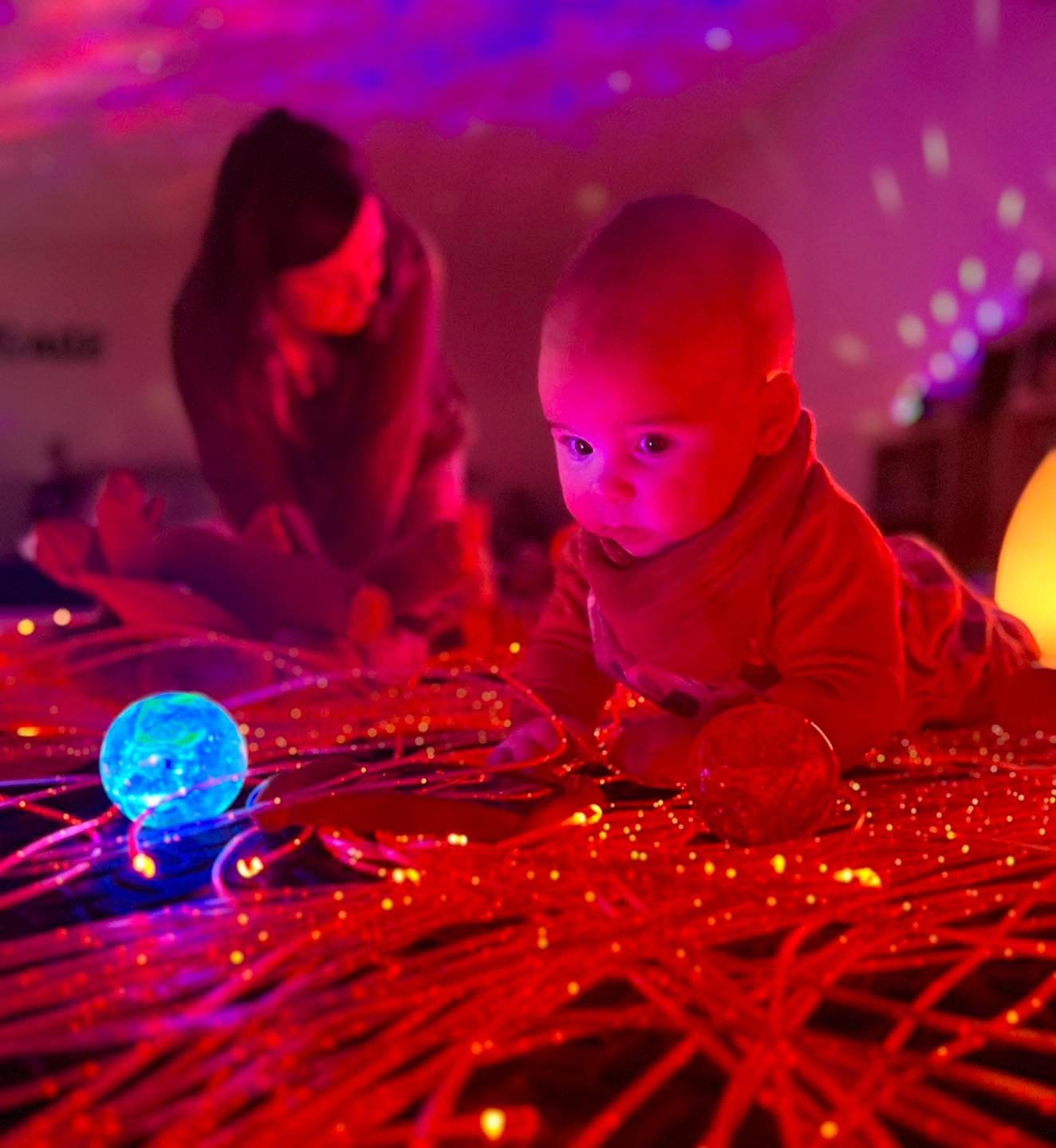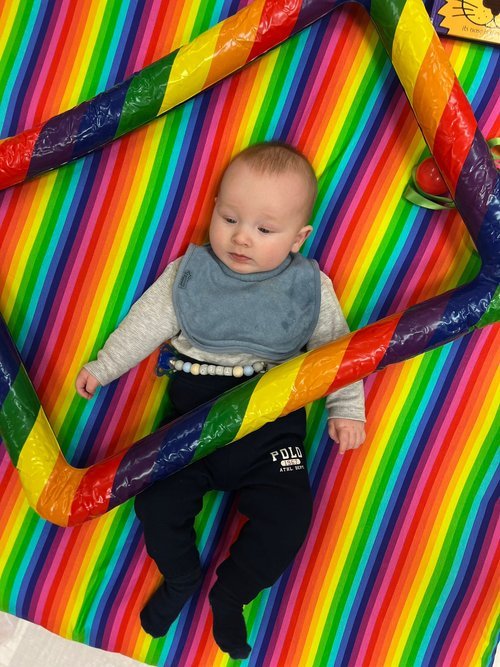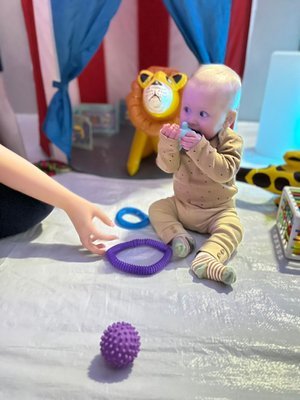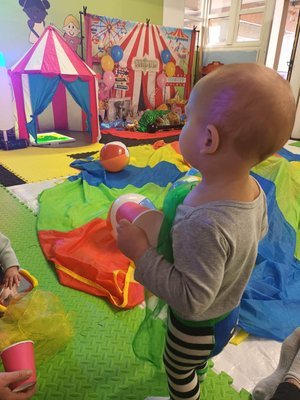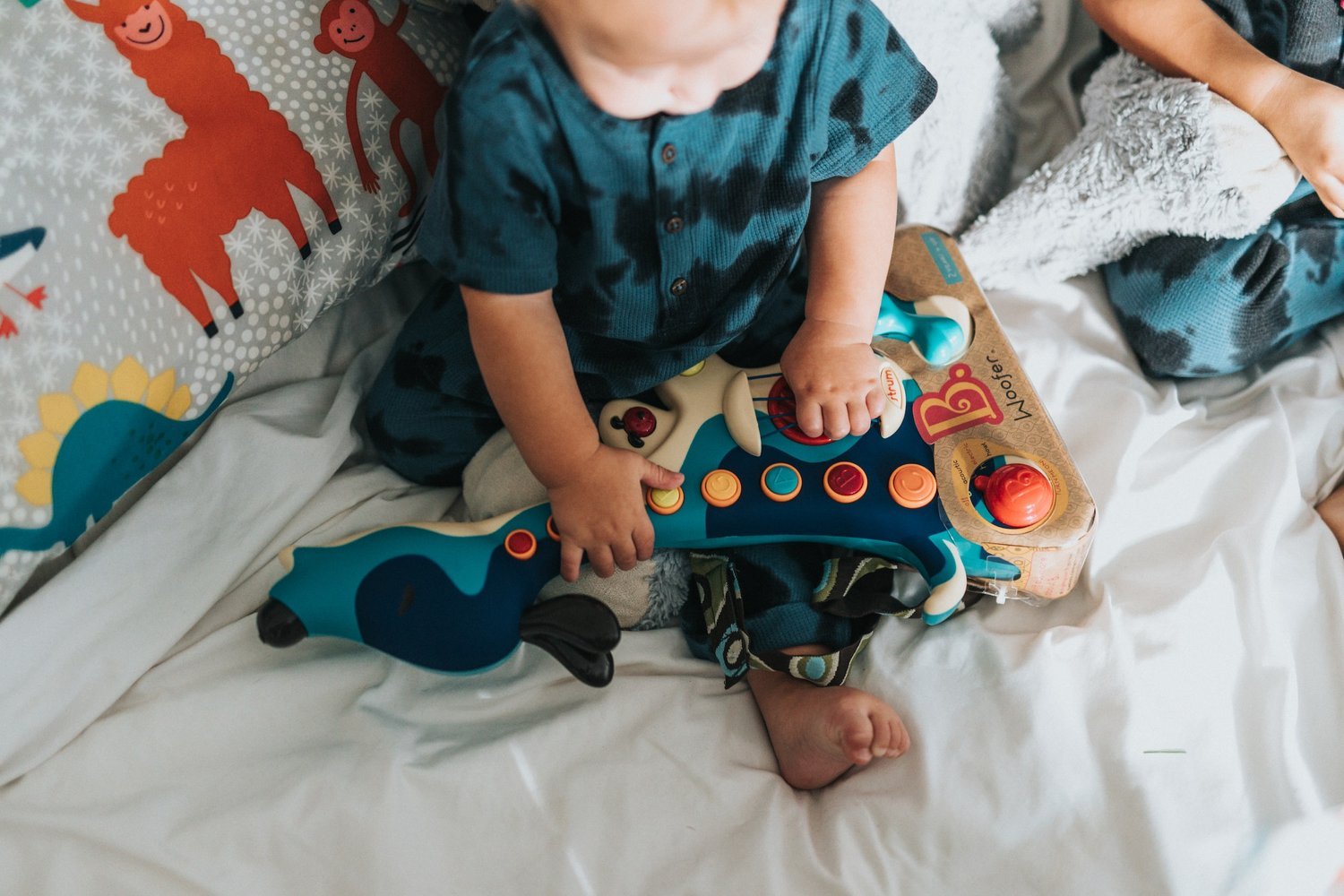
Our Sensory Classes Schedule
To find sensory classes in Batley, Cleckheaton, Mirfield, or Ossett, check out our baby class list below. In our sensory development classes, you and your baby will experience light shows, boogies, puppet shows, music and movement, tummy time play, baby yoga, sign language, baby massage, sensory scent exploration, parachute games, bubble shows, arts and crafts, explorations of textures, and so much more! Attending a sensory class is the best way to support your baby in their development.
Add to Waitlist
Are classes currently full? Add your name to our waitlist, and you’ll be the first to hear about availability in upcoming classes!

What Happens in a Sensory Baby Class?
The sensory theme for this week in class is Circus Show.
Ladies and gentlemen, beautiful babies, welcome to the greatest show on earth! The circus is in town, and we are thrilled to have you witness the extraordinary sensory spectacle that will leave you and baby amazed. So sit back, relax, and let us take you on a journey of wonder and pure imagination!
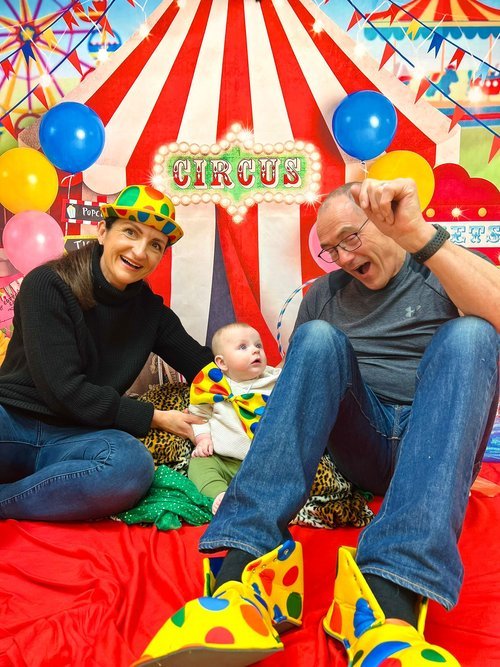
Seven Sensory Wonders in Each Class!
In each class, we have seven sensory wonders which relate to the theme of the week. Each multi-sensory activity is linked to the early years framework to support physical, social, emotional, and language development — covering every stage of development from newborn to 13 months.
Sensory Activity 1 – Little Acrobats Baby Yoga Stretch
What we do: Class members copy class leader Maisie in carrying out a baby yoga routine to the song Rewrite the Stars from The Greatest Showman (a serene instrumental version).
How we do it: First, we gently stretch baby’s left arm up, then draw the arm down to the opposite hip performing a slow, diagonal movement (like the Night Fever dance move). Then we stretch the opposite side. After we’ve warmed up both sides of baby’s body, we then move on to “How big is baby?”, stretching baby’s arms over their head before bringing them down to their tummy again.
Next, we gently bring up baby’s knees into their tummy (foetal position) to stretch their lower back, before relaxing. When finished, we place a hand behind one knee and draw it up and over the opposite side of the body, engaging the obliques to encourage baby to roll over onto their side. Then we perform this stretch with the opposite leg. To train baby to make that rolling movement independently and maximise their natural stretching range, we place a toy within reach.
Why we do it: Benefits of baby yoga include a calmer and relaxed baby; strengthened bond; increased bodily awareness; improved core strength, balance, physical development, and gross motor skills; greater range of movement and flexibility.
Sensory Activity 2 – Circus Audience Participation: Chinese Ribbons
What we do: Every parent is handed a little Chinese ribbon which we swirl around while the song Entries of the Gladiators plays out (you’d know it if you heard it).
How we do it: Following the movement of the class leader, grownups provide a visual tracking experience for babies, teaching our babies about directions and shapes. We start by going left to right, then up and down, round in circles, before performing zigzags and infinity loops.
After the visual stimulation, we move on to texture exploration and let the ribbons, gently allowing the ribbons to tickle baby’s toes, hands, and heads — all the while narrating our movements and reaffirming our speech.
Why we do it: Visual stimulation promotes movement tracking and improves alertness; activity designed to stimulate visual senses; develops communication skills when narrating movements; encourages foundations of a child’s development of language; tactile exploration strengthens fine motor skills and cognitive development.
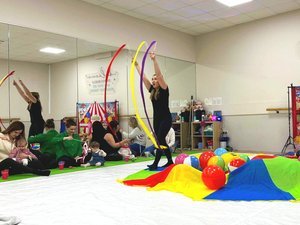
“Studies show that interacting with other little ones helps babies and young children integrate into nursery and preschool.”

Sensory Activity 3 – Circus Tent Parachute
What we do: Grownups gather around in a circle and each take an end of the parachute. There are balloons and multicoloured beach balls on top, and underneath are sensory toys, fibre optic lights, and battery-operated LED lights.
How we do it: After a countdown, we lift the parachute into the air together at the same time. As we do, we allow the crawlers to explore the “circus tent” and the sensory toys and interact with each other.
For babies who aren’t yet crawling, laying them down to look up at the colours and lights shining on the parachute gets a great response; and for those babies who are practising sitting up, grownups can sit them on their knees — they love taking part in shaking the parachute.
Why we do it: Babies interacting with each other is an important part of social and emotional development and developing their understanding of the world around them. There are few opportunities from day to day where babies get the chance, and we provide that opportunity in each class in a non-pressurised way.
Not only that but children love being sheltered and beneath a den — just like they do at home when you hide under a quilt or blanket. It’s also a great tummy-time experience as babies lift their heads to see what’s going on around them. Above all, it’s great fun!
Sensory Activity 4 – Nellie the Elephant Puppet Show
What we do: Up next in our line-up, we have a lively puppet show based on the classic song Nellie the Elephant. Babies and grownups gather around the puppet stand. Time to sit back, relax, and enjoy the show.
How we do it: Class leader Maisie takes us on a choreographed journey through the song. Babies are encouraged to look out for Nellie the Elephant popping up from behind the puppet stand — she appears from left to right, through the curtains, and performs gestures for babies to mimic. Then, partway through the song, as Nellie escapes from the circus, Maisie comes around with Nellie and interacts individually with the little ones briefly, allowing them to see Nellie up close.
Why we do it: Sparks baby’s curiosity when hearing a range of animated voices. Encourages silliness and play among grownups too — which is important for the bonding experience. Teaches auditory learning through rhythm and singing. Babies are encouraged to wave, clap along, and imitate the noises of the animal puppets.
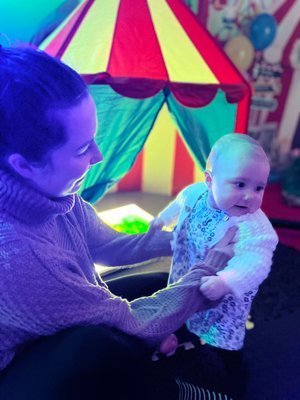
Sensory Activity 5 – A Million
Dreams Light Show
-
Sensory light show to the song A Million Dreams from The Greatest Showman.
-
Class leader Maisie turns down the lights and floats around the room in light-up butterfly wings, performing slow and calm ululations. All the sensory lights are switched on, including the fibre optic lights, LED cube lights, and the galaxy and aurora ceiling lights, creating a serene atmosphere that seems as though we’re travelling through the wonders of the cosmos.
-
Visual stimulation; promotes understanding of the spectrum of colours; even for newborns, whose eyes aren’t yet fully developed, the brightness, contrast, and saturation of the colours are visually striking.

Sensory Activity 6 – The Interval – Free Play Sensory Exploration
-
Time for an interval, but one which allows babies to explore the themed sensory play stations and allows grownups to take a break, chat among themselves and make new friends and meet new parents, listen to our hand-picked playlist, and feed or change baby. A customer once said to me, “Every week, the free-play set-up is like a birthday party.” And I couldn’t agree more.
-
In this part of the class, you and the baby have free rein to explore every activity. Grownups love to grab a picture at our professional photo backdrops and explore the sensory free-play stations. This week, we have a circus tent, an elephant tent and crawl tunnel, a multicoloured ball pool, a lion hopper, a reading corner with circus and carnival books, inflatable animals, an airbed with multicoloured material and other sensory toys such as clown horns, wigs, and juggling balls.
-
A highly interactive environment, specifically designed to encourage independent play; allows babies and grownups to play at their own pace and spend more time in areas that draw their immediate interest; an opportunity for babies to interact with each other — as mentioned, unless you have a friend or family member with a baby, your baby is unlikely to interact with other babies throughout the week.
Just like us grownups, babies learn more from mimicry and spending time with their peers than our teachers, and the same can be said not just for baby development but for all stages of learning and development – from early childhood right throughout our lives.
Studies show that Interacting with other little ones helps babies and young children integrate into nursery and preschool. We’re a friendly community, too, and a micro-hub to support parents and their wellbeing.
Sensory Activity 7 – Disappearing Scarves Magic Trick
-
After the interval, we’re back for just one more themed sensory activity. We hide an object, in this case, a scarf, underneath a cup.
-
Each grownup is given a magic cup and a scarf. Following class leader Maisie’s lead, they make the scarf disappear and reappear by hiding it in the cup and taking it out. We pop our scarf in the cup upside down, then we countdown for a big reveal.
-
Teaches object permanence, which is when we know something exists even when we can’t see it. It’s just like playing Peekaboo! When grownups hide behind their hands and reappear, it’s a lovely surprise for babies. With this cup and scarf technique, we countdown. The repetition of numbers teaches baby the most elementary numeracy skills and the concept of time.
Not only that, but they learn about anticipation and what to expect after seeing or hearing certain cues. We ask babies “Where has it gone?” and because of the inflexion at the end of our question, they understand that the following silence is a gap (or cue) for them to respond.

Goodbye, Wriggle Monsters Lullaby.
What we do: A calming bubble show with sensory lights as we listen to our Wriggle Monsters goodbye lullaby.
How we do it: The lights are lowered and calming music is played. Class leader Maisie goes around the room with a bubble machine. Babies look up in wonder at the magic of the floating bubbles.
Why we do it: To relax baby after a stimulating class. With this final sensory activity, babies will visually track the falling bubbles and are encouraged to lift their hands to pop them. This promotes fine motor skills and hand-eye coordination. Babies also wave and say bye-bye (promoting language development) which is often one of the first words babies learn.
It’s a great bonding exercise and many grownups like to hum, sing, rock, feed, or massage during this time. Babies frequently fall asleep at this stage or in the car on the way home. Routines such as this promote meaningful rest and play and prevent over-tiredness and overstimulation.

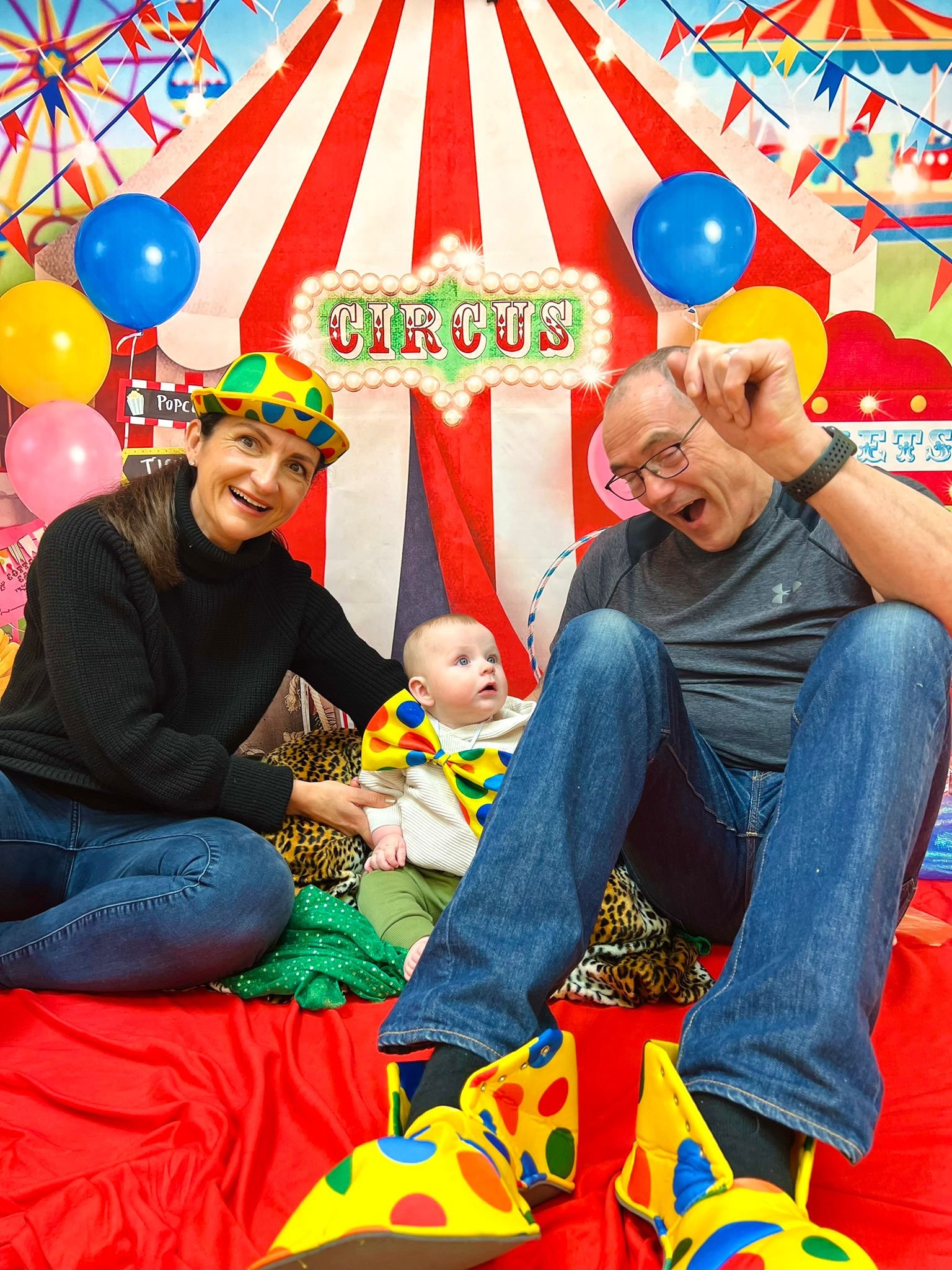
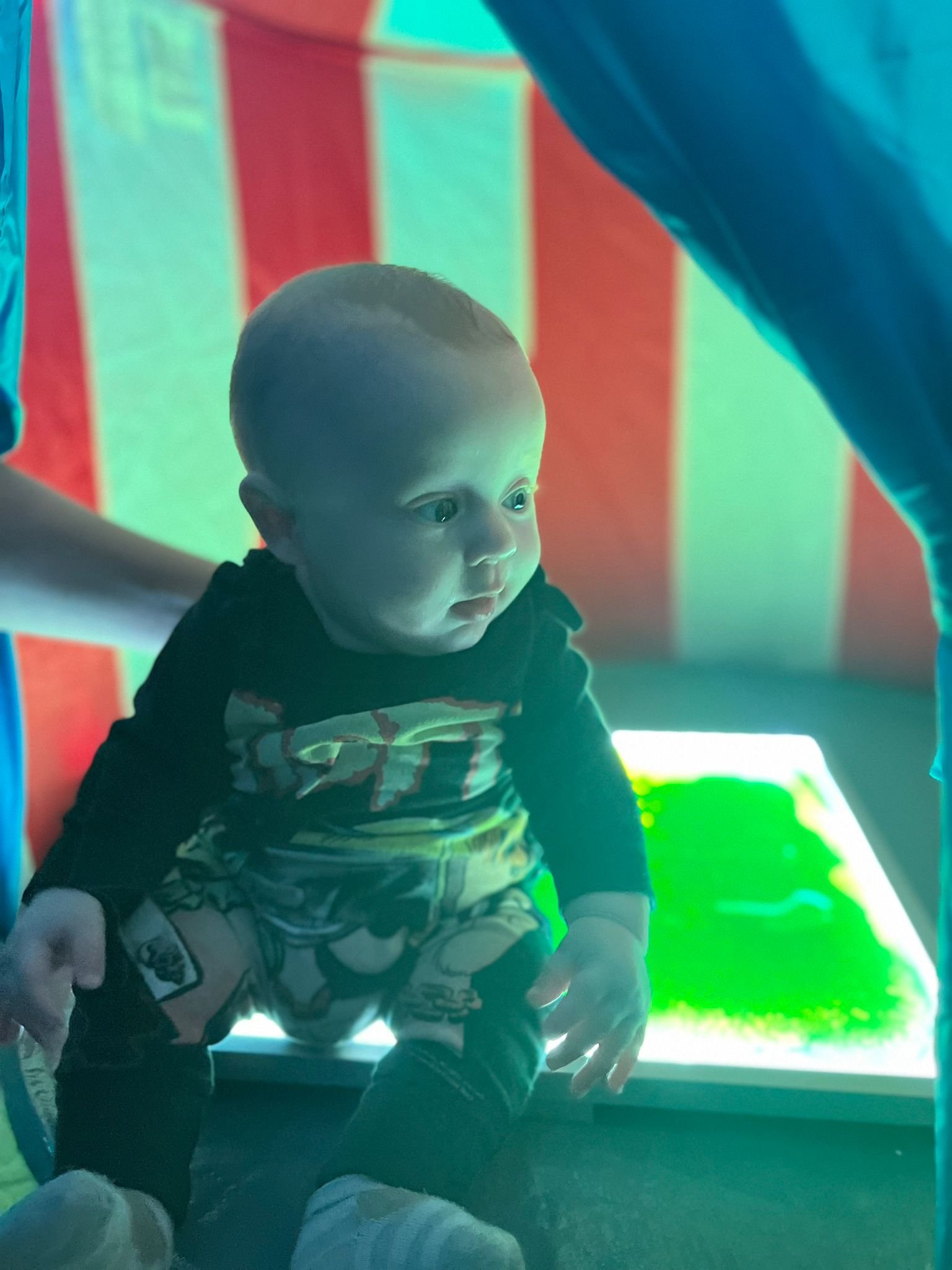

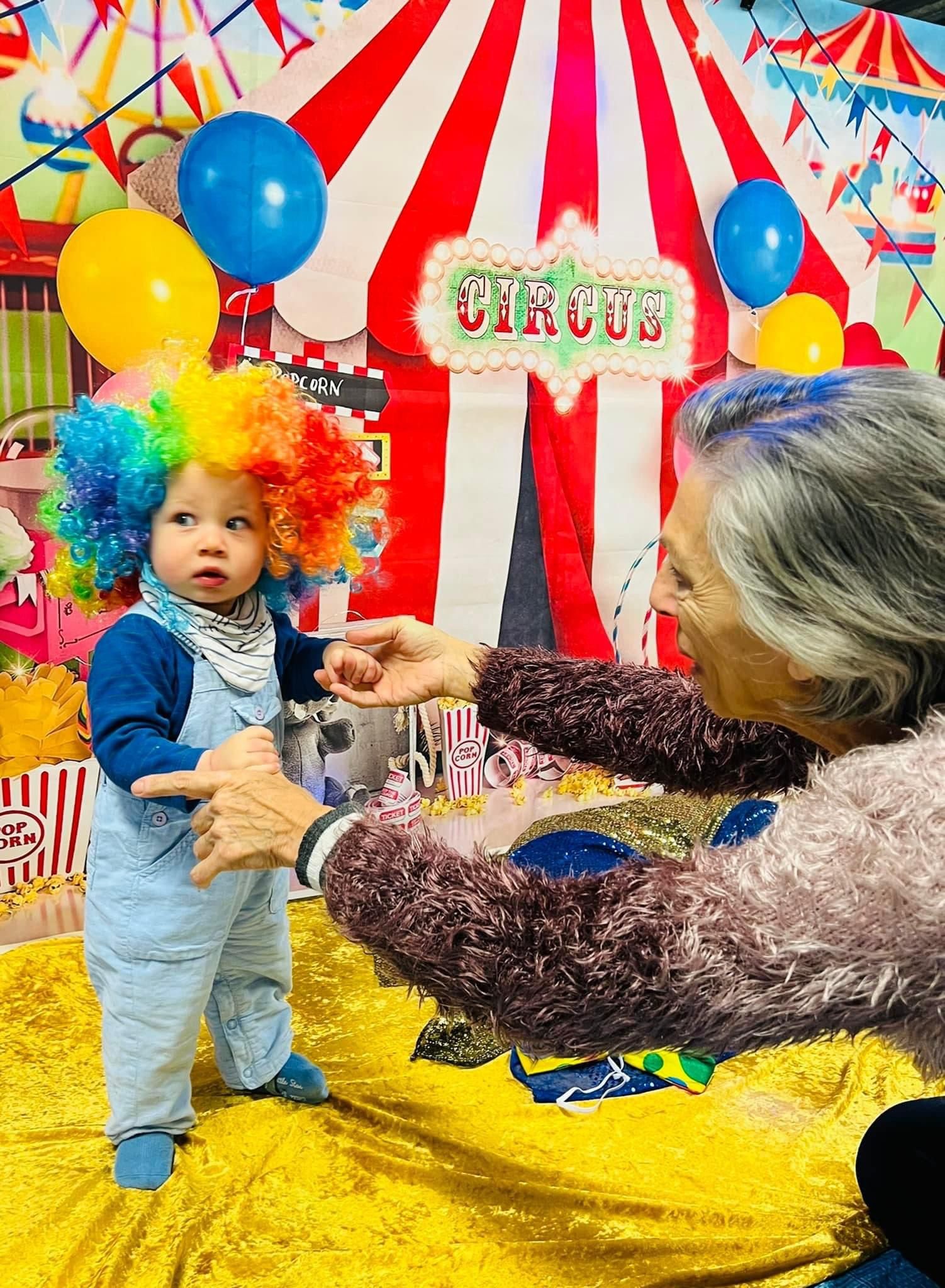
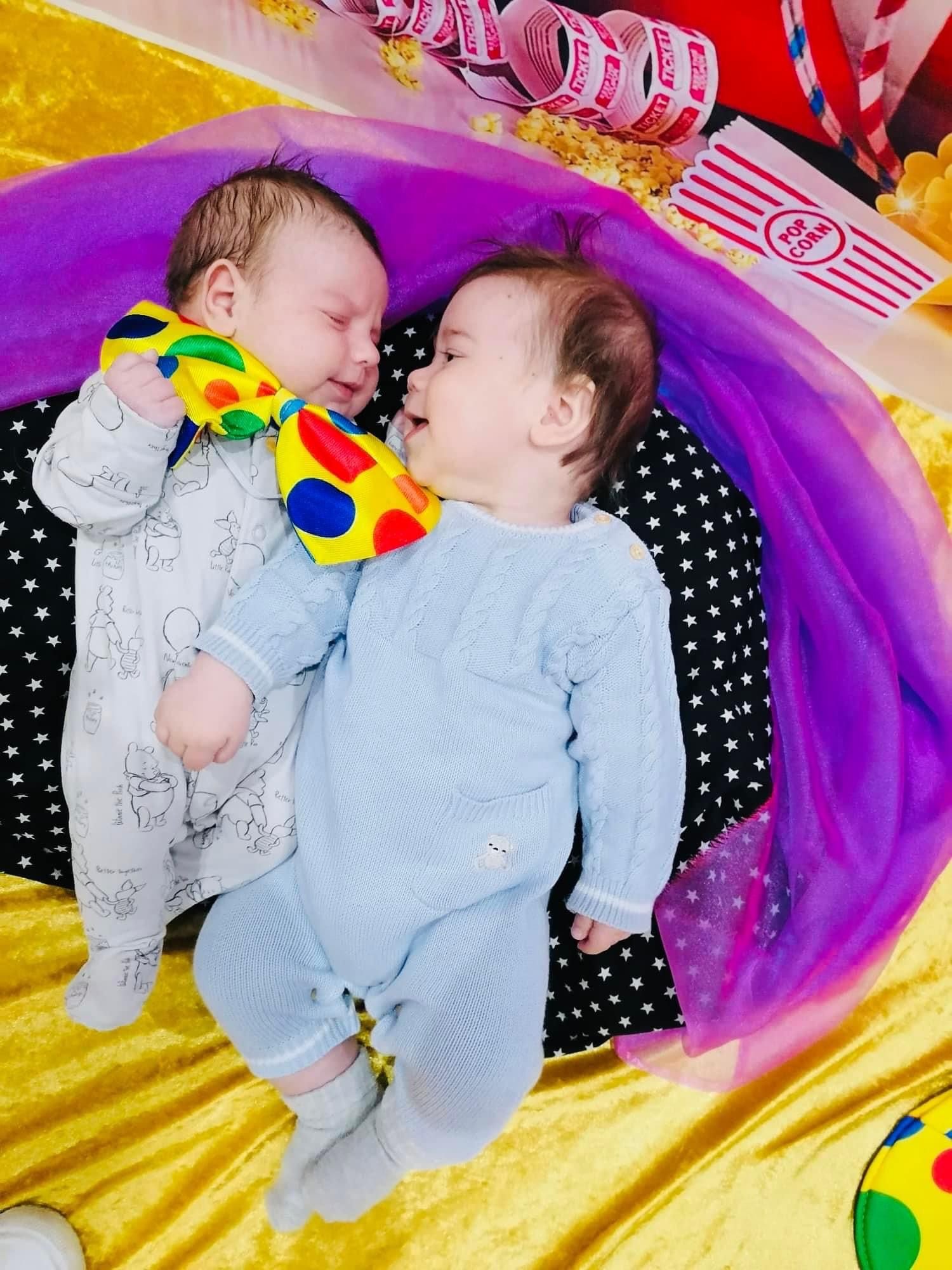

Sensory Development Classes In Batley, Cleckheaton, Mirfield, and Ossett.
If you haven’t already, I’d love it if you and your baby could join us in one of our sensory development classes for babies. Introvert or extrovert, you can be as involved as you want to be. One thing I always stress is that we parents never get this time back.
When growing up, you’ve probably heard doting mums, dads, grandparents, aunties, and uncles say, “Oh, they grow up so fast.” And that’s so true. You blink, and suddenly they’re no longer a newborn baby. We have to cherish their early years.
Make the most of your maternity leave and paternity leave, and book on to our developmental sensory sessions in Batley, Cleckheaton, Mirfield, and Ossett. Oh, and you’ll also be supporting a local business, too! Wriggle Monsters is an independent provider, not a national franchise — which means you’ll gain access to the best schemes of play and the best content at the best prices.
